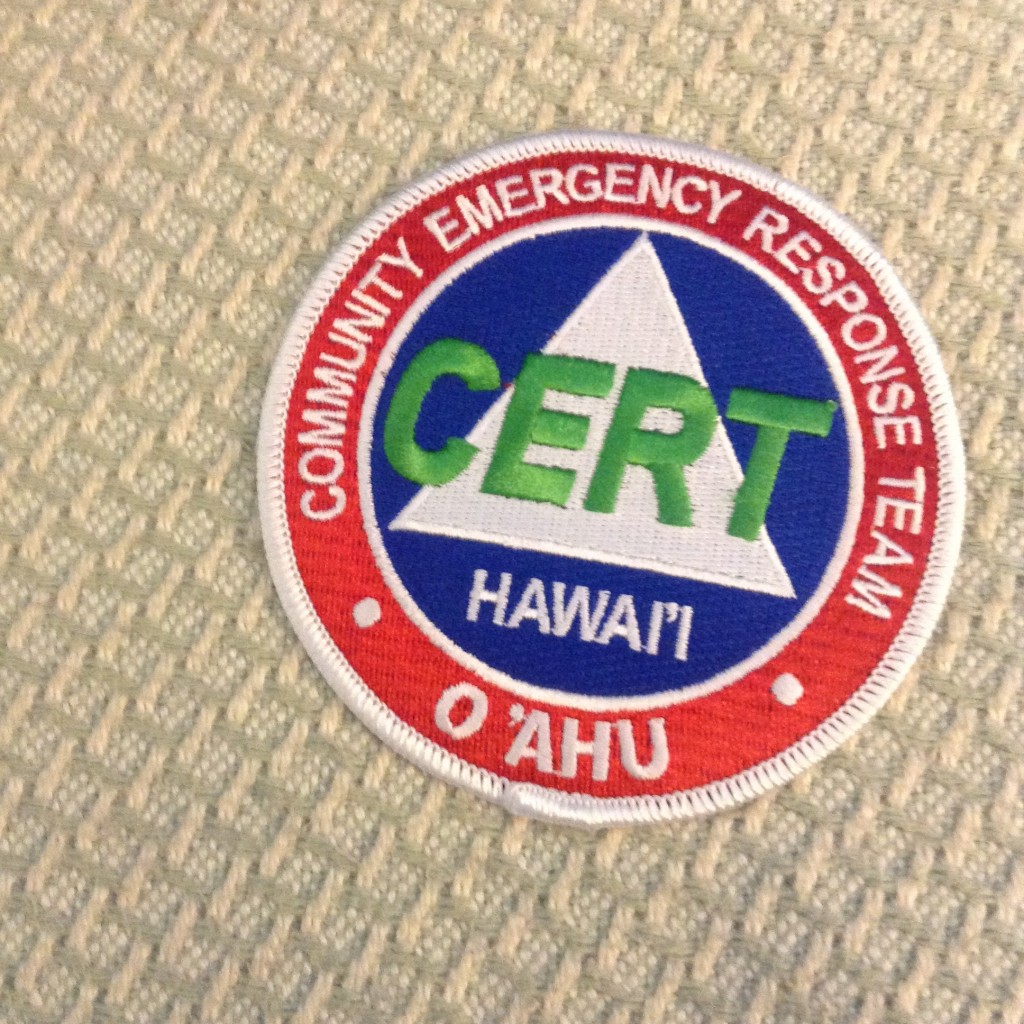
Last month I completed my CERT training.
CERT stands for Community Emergency Response Team.
I don’t remember how I first heard about this. But I had looked into it before joining Be Ready Manoa. I joined Be Ready Manoa which is a disaster preparedness group right in our area. YWAM offered up the use of our young people in case of emergency. Since attending we’ve been able to build stronger ties with our local community.
You sign up for the CERT course, which is free, you get some training, both classroom and hands on and then you get a bag of gear at the end, all for free and with no obligation. If disaster comes, you can volunteer to help out on a CERT team, or you can stay at home with your family. So why NOT do this course?
Anyway I had contacted Jeff ,the guy that runs it a few times, and finally decided that September was my month to bite the bullet and just do it. No cost, just 3 classes on Saturdays. Training was 16 hours of classroom and then 6 hours of hands on.
The first class was my favorite of the two. We learned a lot of practical stuff.
Like how to use a fire extinguisher. They told us that the majority of people will be gripping it so it will be impossible to pull the pin. That was something I had never thought of. They also told us that if there was an emergency you could change your voicemail to update family and friends as to your status incase they couldn’t get through. That’s pretty brilliant too and not something I had thought of. Also, they said if you were in costco and there was an earthquake that the safest place to be was under one of the shelves that was made to hold thousands of pounds of weight and was bolted to the floor. I would not have thought of that either.
The statistics were sobering. Out of the about 1 million people on Oahu, there are 20 ambulances, 1200 firefighters, 2000 police officers and 450 EMTs. So if there was a major catastrophe that took out one or more of the large hotels in Waikiki those 20 ambulances would be used up pretty quickly.
The hands on portion was also pretty sobering. We did a mock rescue with half of our class as victims in a building with 3 separate rooms and desks and chairs as obstacles. The room was dark, and fog filled. We had head lamps. The first drill, I was the first one in the building with a team mate. We were the triage team. We entered the dark room with our hand on the right wall, my team mate Bernard had his left hand on my shoulder. I had to call out any obstacles that I found.
We came upon mock victims who had various injuries. Fake blood, and fake injuries were used. I had to make contact with the victim, and quickly assess them and then mark them for triage by tying a green, yellow, red or black ribbon around them. If they had life threatening injuries I had to quickly do first aid all while reporting to Bernard what room we were in, a description of the vicim, a description of their injuries and their triage marking, so that he could radio to Incident Command who would then send in extraction teams. With the lights off and the fog, and the other half of our class doing a pretty good job of acting, it began to feel real. Making split second decisions and the difficulty of not really being able to see, and constant radio chatter made it stressful. It took us 35 minutes as a team to get everyone out of the building and we were only treating fake injuries. There were only 3 rooms, and 9 people. I can’t imagine if this was a real world situation.
We all walked away from the training realizing we needed more training in first aid. I’d like to get my first aid/cpr/aed training before the year is out. I also saw that Red Cross offers Wilderness First Aid, but the prereq is the basic course. I think these skills will provide very useful as we continue to lead missions trips in at times remote areas.
I was so impressed with Trevor who first did Incident Command. He’s a college student here at UH, and is a ham radio operator. He handled 5 different teams, well, on the radio, keeping track of everything that was going on and prioritizing and directing his team. I honestly don’t think I could have done that without getting overwhelmed and confused.
I got my ham radio license last spring, but haven’t been able to buy a radio yet. After spending some time with Trevor and Bernard and seeing the importance of good radio communication during an emergency I’m going to prioritize getting one even if it’s cheap. I’ll at least getting some time on the air.
It’s fun getting new certifications, especially when they cost next to nothing. It’s a great way to meet new people, and learn a new skill and become a part of the community.
Living on an island in the middle of the Pacific has really changed the way I think about life. A tsunami or a hurricane could greatly devastate us here, and we’re really far from any resupply.
They recommend having at least 3 days of food and water as a minimum. Here in Hawaii they recommend having at least a week.




by Jim Baker
Wow, Congratulations!
Wow, Congratulations!
Wow, Congratulations!
Wow, Congratulations!
Interesting and lots of suggestions. Thanks and congratulations on certification.